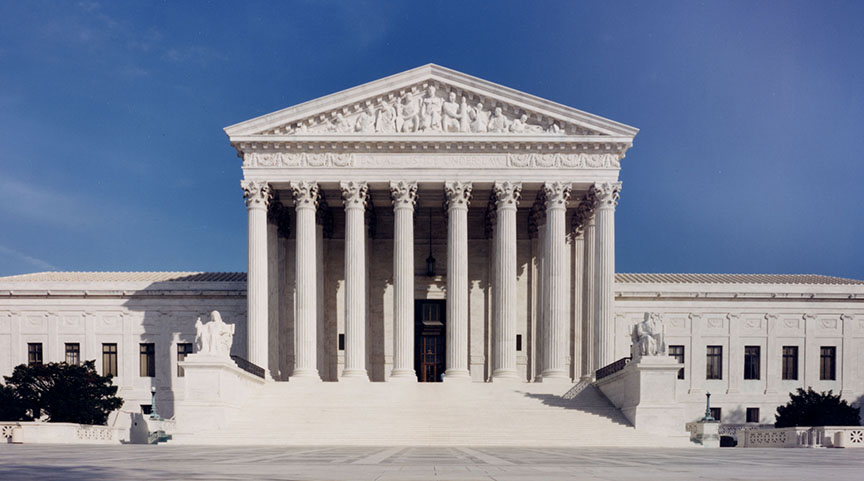U.S. Supreme Court Overturns Roe v. Wade
The Supreme Court of the United States voted to overturn Roe v. Wade (1973) on Friday morning, June 24.
June 24, 2022
The U.S. Supreme Court overturned Roe v. Wade on Friday morning, eliminating a Constitutional right to abortion. This decision puts the question of abortion legality in the hands of the states and grants them the ability to implement total abortion bans. Almost 50 years after the Roe v. Wade decision, this ruling will likely lead to abortion bans in about half of states.
Right-leaning states are expected to restrict and even eliminate abortion access. Thirteen have automatically implemented “trigger laws,” legislation set to go in effect and ban abortion as soon as Roe v. Wade was overturned. These “trigger laws” will ban abortion in the next 30 days in several states, including Texas, Mississippi and Tennessee.
Left-leaning states are predicted to continue to preserve legal abortion access. California is among the states that have vowed to uphold abortion rights and act as safe havens for women seeking the procedure.
This morning’s ruling comes in the case of Dobbs v. Jackson Women’s Health Organization, wherein a Mississippi law passed in 2018, called the “Gestational Age Act,” sought to ban abortions after 15 weeks of pregnancy. Mississippi’s only licensed abortion provider, the Jackson Women’s Health Organization, filed a law suit challenging the constitutionality of the law.
Previously, abortion restrictions and bans could not be implemented on the state level because they were considered unconstitutional under the ruling of Roe v. Wade. The U.S. Supreme Court’s decision to rule in favor of the Mississippi law now grants state lawmakers the opportunity to determine whether abortion will be legal in their states.
The 1973 ruling in Roe v. Wade permitted abortions throughout the first two trimesters, or six months, of pregnancy.
While the Supreme Court has overruled its own precedents 232 times since 1810, it is rare for the Court to reverse its own ruling to take away rights rather than expanding them.
This announcement follows a leaked draft of a Supreme Court opinion that made headlines in May. The official ruling from the Supreme Court this morning echoes the leaked opinion, which reportedly came from Justice Samuel Alito’s desk.
The majority opinion, written by Justice Alito, stated that, “The Constitution makes no reference to abortion, and no such right is implicitly protected by any constitutional provision.”
“Indeed, abortion had long been a crime in every single State,” Justice Alito continued. “At common law, abortion was criminal in at least some stages of pregnancy and was regarded as unlawful and could have very serious consequences at all stages…Without any grounding in the constitutional text, history, or precedent, Roe imposed on the entire country a detailed set of rules for pregnancy divided into trimesters much like those that one might expect to find in a statute or regulation.”
Justices Alito, Barrett, Gorsuch, Kavanaugh, and Thomas voted to overturn Roe v. Wade, and Justice Roberts concurred in judgment only. Justices Breyer, Kagan and Sotomayor voted against the ruling.













James • Jun 30, 2022 at 5:23 pm
“…It is rare for the Court to…take away rights rather than expanding them..”
In framing this decision as “taking away rights” versus “maintaining or expanding rights,” you are starting with the premise that only the mother has valid interests. If the unborn child also has rights (and even Roe and Casey concede this point by allowing for limitations on abortion), then the decision in Dobbs v Jackson has restored or expanded those rights in a significant way.